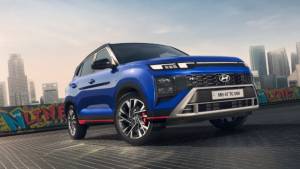Korean courier
Korando is one of the most familiar car model names in South Korea. When the country was first emerging as a major car manufacturer, it was said that it stood for 'Korea can do'. Well, Korea certainly can, as Hyundai-Kia has shown but Ssangyong, which introduced the first Korando 4X4 in 1974, has not been as convincing.
In the past 15 years Ssangyong was associated with Mercedes-Benz (which thought of using it as its Asian base but didn't); went broke; was taken over by Daewoo, which went broke; and came under the control of Shanghai Automotive (SAIC), which, in 2009, refused to make further investment and put the company into administration.
There is a good reason for telling you all this â" and about the new Korando C, last month Mahindra & Mahindra completed the acquisition of Ssangyong Motor. Although Ssangyong is a small player compared with Hyundai and Kia, its SUVs are sold in 98 countries; 70 per cent of sales are in Europe. It has designed a series of modern vehicles, engines and chassis systems that complement the Mahindra range. So the Korean company could be really useful in Mahindra's bid to go global and match Tata Motors' far-reaching ambitions. And of course take Mahindra's Indian range upmarket starting with the Korando C.
The sales pitch for the fourth-generation Korando C is not promising: 'Classy Utility Vehicle'. But there is no doubt that it is a step up from previous Ssangyongs. It is its first SUV-car crossover, the first with monocoque construction, and has a new common-rail direct-injection four-cylinder 2-litre turbo-diesel engine with the choice of manual and automatic transmissions, both six-speed.
In size, at 4.4m long and 1.67m high, it is equivalent to the Suzuki Grand Vitara but its real rivals are the Hyundai ix35 and the Kia Sportage, neither of which are sold in India. In Europe, it will offer a higher specification than these, at a lower price, and seriously under-cut the 'soft-roaders' from Ford, Nissan and Volkswagen.
On paper, its pedigree is good. In recent years, Ssangyong has used the services of Giorgetto Giugiaro's ItalDesign. This famous Italian design house styled the Korando C prototype three years ago and up-dated the design when the administrators (ironically, ex-Hyundai management) decided to proceed to production. Now that Giugiaro has sold out to Volkswagen, this could be the last non-VW production car to have his mark.
The Korando C's chassis platform â" basically transverse-engined and front-wheel drive - will be the basis of a new series of Ssangyong models, larger and smaller.
The Korando C is available with front-wheel drive or four-wheel drive, the latter arranged through an electronically-controlled clutch unit developed and supplied by Delphi. In normal conditions the AWD version drives only the front wheels but distributes power to the rear in slippery conditions or when pulling away on a slope. It can also be locked in 50:50 front:rear torque distribution at speeds up to 40kmph.
The diesel engine is Euro V compliant, develops 175PS, and with a combined cycle fuel consumption of 16.7kmpl has CO2 emissions of 157g/km â" among the lowest in its class. It has a variable geometry turbocharger, exhaust gas recirculation and a particulate filter. In terms of smoothness and refinement it is about average for its type â" which means pretty good by the standards of only a few years ago â" but it isn't as torquey as most of the latest diesels. Its maximum of 360Nm is delivered between 2,000 and 3,000rpm.
The suspension, carried on sub-frames, is by conventional MacPherson struts at the front and multi-link with coil springs at the rear.
None of these high-set vehicles rides really well but the Korando C is no worse than its rivals. It is relatively softly sprung but has enough body control to handle tidily. The steering isn't so good; the electric power assistance is speed-sensitive and makes it too light when going slowly, it feels a bit vague straight ahead, and is similarly uncommunicative at speed on a winding road.
The latest safety equipment is included: six airbags and ESP electronic stability control integrated with active rollover protection, brake assist, and a brake system to prevent rollback on hills.
The interior has a simple but logical design with more hard plastic than we are used to these days but the fit and finish are good. Ssangyong claims more cabin room than any of its rivals. Certainly, the rear seat space is generous â" and the seat backs are adjustable â" but this is at the expense of the load area. The seats can of course be folded to provide more luggage space.
Ssangyong plans to make 100,000 Korando Cs a year and Mahindra will begin CBU imports from the first quarter of 2011 with assembly from CKD kits to commence by the year end. This will ensure competitive pricing - above the Scorpio at around ` 18 lakh - but there is a gaping hole at this price range which the Korando C can properly milk.
There are also plans for a smaller B-class crossover â" something like the Nissan Juke â" to be made in similar numbers for the European market and a larger, more luxurious model on the same platform to replace the Rexton. Again both of these will come to India in due course. Most of the older body-on-frame models will be phased out over the next year but Ssangyong wants to retain its gawky-but-practical seven-seat Rodius MPV and the Chairman, a Mercedes S-Class size limousine based on a three-generations old E-Class, which is one of Korea's most expensive cars (neither of which will come to India).
Whilst the Korando C isn't a class leader, it is the best car that Ssangyong has done to date and will make a useful addition to Mahindra's range, taking it into a part of the market where it isn't currently represented.
-NA-
1995cc
Automatic
185
402
12 Kmpl
Related Stories
Top Stories
Latest Videos
Most Popular
- Upcoming Mahindra XUV 3XO: All you need to know
- New Suzuki Swift spotted testing
- Nissan Magnite EZ-Shift review - is the AMT any good?
- Budget Sportbike Showdown: Kawasaki Ninja 500 vs Aprilia RS 457 vs Yamaha YZF-R3
- 2024 Hyundai Creta vs Toyota Urban Cruiser Hyryder vs Skoda Kushaq comparison review - the hype is real?














